The Laboratory of Chemostratigraphy and Organic Geochemistry – LGQM includes the all infrastructure needed for the analysis of these two distinct themes.
Organic Geochemistry :
In the investigation of biomarkers, are operated with advanced instrumentation, such as the mass spectrometer Triple Quadrupole, Agilent 7000 GC / MS Triple Quad, the Agilent 6890 gas chromatograph with Selective Detector Network Mass 5973 (GC-MS) and the Agilent 7890 gas chromatograph with flame ionization detector (FID), of great value in supporting the research (FIG.1).
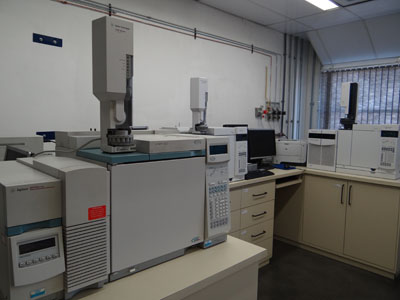
In pyrolysis tests, LGQM is one of the few laboratories that perform the Rock Eval 6 VINCI Technologies (FIG.2). This equipment generates accurate data on rocks geochemistry.
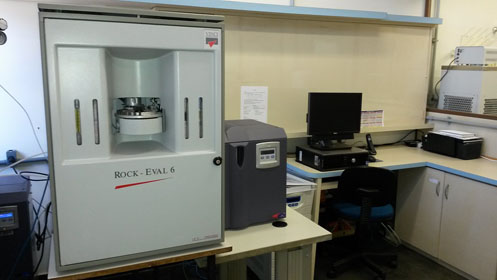
Chemostratigraph :
The second LGQM working theme area comprises the chemostratigraphy research. To do so, the laboratory is equipped with two sulfur and organic carbon (TOC) analyzers LECO CS 632, also used in organic geochemistry studies (Fig.3).
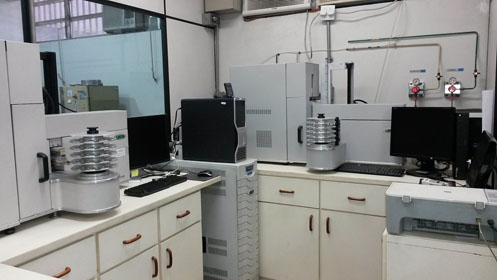
The laboratory equipments play a key role in the characterization of the materials analyzed. For the quantification of elements in rocks and oil, the Bruker S8 Tiger Fluorescence analyzer is used (Fig. 4).
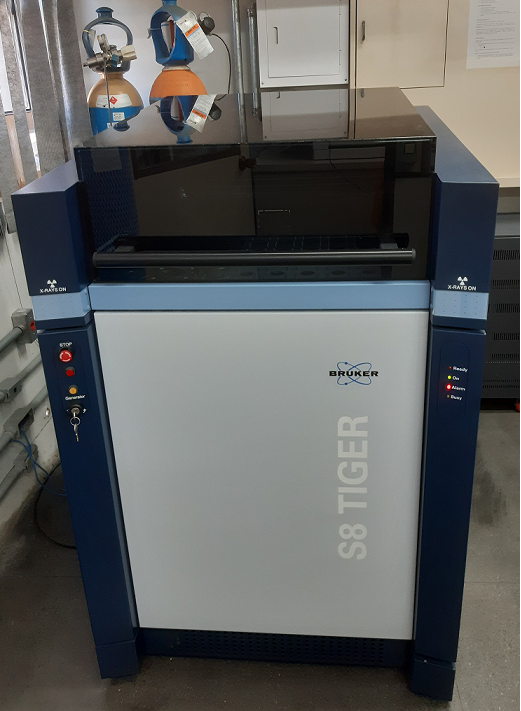
Analysis of Stable Isotopes, are made through the advanced spectrometer isotope ratio mass (IRMS). Devices like Flash EA 1112 and Kiel IV Carbonate conduct the isotopic ratios of organic carbon and nitrogen, also oxygen and inorganic carbon, respectively, connected to a mass spectrometer Thermo Delta V Advantage. In addition, the laboratory performs isotopic ratio analysis coupled with gas chromatography (Fig.5).
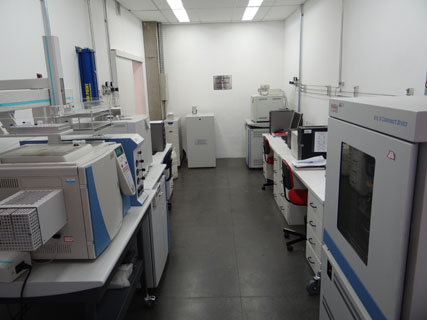
The X-ray diffratometer Bruker D2 Phaser performs analysis by x-ray diffraction, indicated to the identification and quantification of minerals present in a sample by characterizing the crystalline structure (Fig. 6).
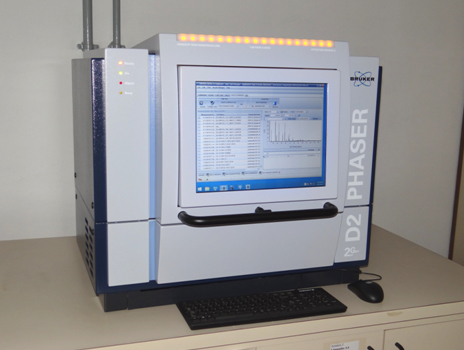
General infrastructure:
In addition to the equipment appropriate to the function proposed, the LGQM has full infrastructure for bench testing such as: muffle furnace, kiln, analytic balances, cooler, rotary evaporator, Pasteur pipette, soxhlet extractor, automatic fusion machine, centrifuge and general glassware for rocks and oil research.
Since its opening, in 1996, the LGQM is operational and supports the essential analysis for undergraduate monographs, dissertations and theses, as well as projects funded by government funding agencies (CNPq, FAPERJ and FINEP). Occasionally, the laboratory provides services to private companies and other institutions. This laboratory is qualified to produce the following: major and minor elements; biomarker; isotopic rate for carbon and nitrogen in organic matter, carbon and oxygen in carapace and rocks, mineral composition, TOC, sulfur and insoluble residues.
List of laboratory equipments:
- Gas chromatography Agilent 7890 coupled to the Mass Spectrometer Triple Quadrupole, Agilent 7000 GC/MS Triple Quad
- Gas chromatography Agilent 6890 with Selective Mass Detector Network 5973 (GC-MS)
- Gas chromatography Agilent 7890 with flame ionization detector (FID)
- Rock Eval 6 VINCI Technologies
- Sulfur and organic carbon analyzer LECO SC 632
- Flash 1112 EA coupled to the Mass Spectrometer Thermo Delta V Advantage
- Kiel IV Carbonate Device coupled to the Mass Spectrometer Thermo Delta V Advantage
- Gas Chromatography Thermo Trace GC Ultra coupled to Flash 1112 EA with Mass Spectrometer Thermo Delta V Advantage
- Fluorescence analyzer Bruker S8 Tiger
- X-ray diffratometer D2 Phaser, Bruker
Team:
- Carmen Lucia Alferes – Chemist
- Danielle Cavalcante – Chemist
- Debora Bonfim Neves da Silva – Chemist
- Marcos Gonçalves – Technician
- Aline Andrade – Secretary / Administrative worker
Coordinators: Dr. Egberto Pereira and Dr. René Rodrigues
Contact: +55 21 2334-0661 (#223)
Coordination: egberto@uerj.br
Administrative: lgqm@uerj.br / lgqm.adm@gmail.com